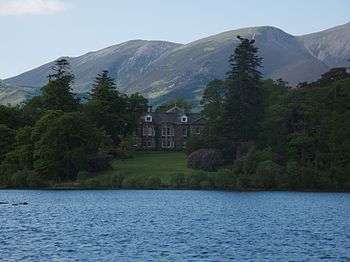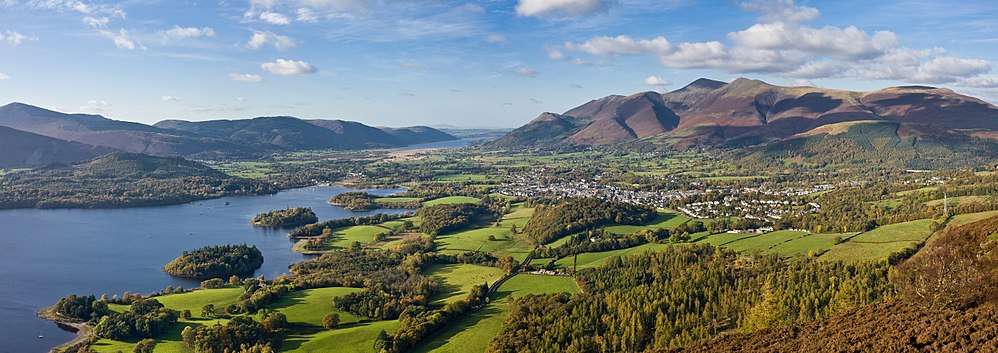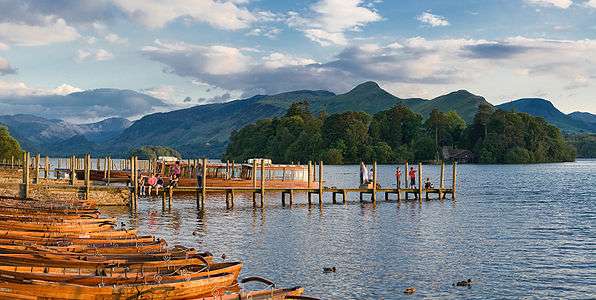Derwent Island House
Derwent Island House (often called Derwent Isle House) is a Grade II listed 18th-century Italianate house situated on the 7 acre (2.8 hectare) Derwent Island, Derwent Water, Keswick, Cumbria, and in the ownership of the National Trust. It is leased as a private home, but is open to the public five days a year. The interior is classical in style.

History
Derwent Island was owned by Fountains Abbey and used by monks, but with the dissolution of the monasteries, it became property of the Crown in 1539. In 1569 it was sold to the Company of Mines Royal who built a camp on the island where they kept animals, grew vegetables and brewed beer.[1]
In 1778 Joseph Pocklington bought the island (then known as Vicar's Island) and built a house, boathouse, fort and battery, and Druid circle folly on the land. Pocklington held annual regattas on the lake at which he fired off his cannon and the small fort used for mock battles. Henry Marshall purchased the island in 1844 and employed architect Anthony Salvin to add a wing and a three-storey tower to the house.[2] In 1951, Mr Marshall's grandson Denis Marshall gave the property to the National Trust.
Grindlay Family
The house was one of a number of residences of the Grindlay family during the early 20th Century. An ancillary residence for a number of generations, the principle occupant was Reginald Robert Grindlay, a prominent Freemason and the son of Alfred Robert Grindlay, the Mayor of Coventry during WWII,[3] automotive industrialist[4] and distant relative of Capt. Robert Melville Grindlay,[5][6] the founder of Grindlays Bank.
William Wordsworth
William Wordsworth was upset by the building, feeling it spoiled the view, and described Pocklington as "a native of Nottinghamshire, who played strange pranks by his buildings and plantations upon Vicar's Island, in Derwentwater, which his admiration, such as it was, of the country, and probably a wish to be a leader in a new fashion, had tempted him to purchase."[7]
Gallery (Derwent Island and Derwent Water)
Notes
- ↑ "National Trust looks for Derwent Island House tenants".
- ↑ "Keswick - Derwent Isle House". Visit Cumbria. Retrieved 6 December 2010.
- ↑ "Historic Coventry - List of Mayors & Lord Mayors". www.historiccoventry.co.uk. Retrieved 2016-12-27.
- ↑ "Alfred Robert Grindlay - Graces Guide". www.gracesguide.co.uk. Retrieved 2016-12-27.
- ↑ Tyson, Geoffrey (1963). 100 Years of Banking in Asia and Africa History of National and Grindlays Bank 1863-1963. National & Grindlays Bank.
- ↑ "Grindlays Bank" (PDF).
- ↑ Wordsworth, "First Letter on the Keswick and Windermere Railway", 1844.
External links
- Derwent Island House - National Trust


